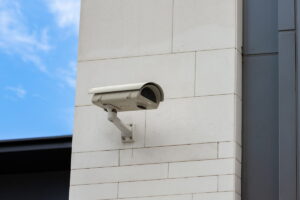Nowadays security is a necessity, and improving the security of a property has an easy solution with video surveillance cameras. Closed-circuit television cameras, known as CCTV, are an essential tool for strengthening the security of your home or business Installing a CCTV camera may seem like a daunting task, but with the right information and the right steps, you can do it yourself In this guide, we will provide you with a detailed step-by-step guide on how to install a CCTV camera so you can enjoy greater peace of mind and control.
What is CCTV security camera
A closed-circuit television camera, known as a CCTV camera, is a video surveillance device designed to capture and transmit images or video in a specific area. These cameras are a fundamental part of security systems and are used in a variety of environments, such as homes, businesses, public and private institutions, and industrial areas. Their usefulness is so broad mainly because of a number of features that make them a great security solution and enhancement.You can go to a professional to get all the advantages that these cameras offer, professionals like us dedicated to security in Marbella take care of these installations and provide security.
CCTV camera features
–Video Capture: The primary function of a CCTV camera is to capture images or record video in real time. These images can be used to monitor activities, prevent incidents or provide evidence in case an unwanted event occurs.
-Real-Time Streaming: Many CCTV cameras allow real-time streaming of captured images or video This can be accessed through local monitors, televisions, or even remotely through devices such as computers or smartphones.
–Night Vision: Many CCTV cameras are equipped with night vision technology, such as infrared, which allows them to capture images in low or no light environments.
–Model Diversity: There are various types of CCTV cameras, including fixed cameras that point in a specific direction, dome cameras that have a wider field of view, and PTZ (pan-tilt-zoom) cameras that can pan, tilt and zoom to provide more detailed images.
–Data Storage: Most CCTV cameras are connected to a recording system, commonly known as a digital video recorder (DVR) or network recorder (NVR), which stores recordings for later review.
–Connectivity: CCTV cameras can be connected via cables or wirelessly, depending on preference and available infrastructure.
Steps to install a CCTV camera
Step 1: Planning
Before starting the Cctv installation, it is important to do some proper planning. Decide on the area you want to cover and the type of camera that best suits your needs. Also, make sure you have access to a nearby power source and the necessary equipment such as cables, connectors and a DVR (digital video recorder).
Step 2: Strategic Placement
Select strategic locations to install cameras. Entry points such as front doors, windows and high traffic areas are popular choices Make sure cameras have a clear view and are not obstructed by obstacles such as trees or poles.
Step 3: Hardware Installation
Start by installing the mounting bracket in your chosen location. Then, attach the camera to the bracket following the manufacturer’s instructions Make sure the camera is securely fastened and adjust the angle as needed to get the best view.
Step 4: Connecting Cables
Connect the camera cables to the DVR Use high-quality cables to ensure reliable video transmission Route cables neatly and securely to avoid damage and facilitate future maintenance.
Step 5: DVR Setup
Connect the DVR to a monitor or TV and turn it on Follow the manufacturer’s instructions to perform the initial setup, which usually includes creating passwords and setting the time and date.
Step 6: Remote Configuration
Many CCTV systems allow remote access to view real-time recordings from your mobile device or computer. Configure this feature according to the manufacturer’s instructions and be sure to protect access with strong passwords.
Step 7: Testing and Adjustments
Test to make sure all cameras are working properly. Adjust angles and settings as needed to get the best picture quality.
Step 8: Regular Maintenance
Perform regular maintenance to ensure optimal performance. Clean lenses, check connections and update software as recommended by the manufacturer.
With these steps, you will be well on your way to having a functional and effective CCTV system. Remember, if at any time you feel unsure or need help, you can always consult a professional Cctv installer to help you. Enjoy the peace of mind that comes with having your own CCTV security system installed!



